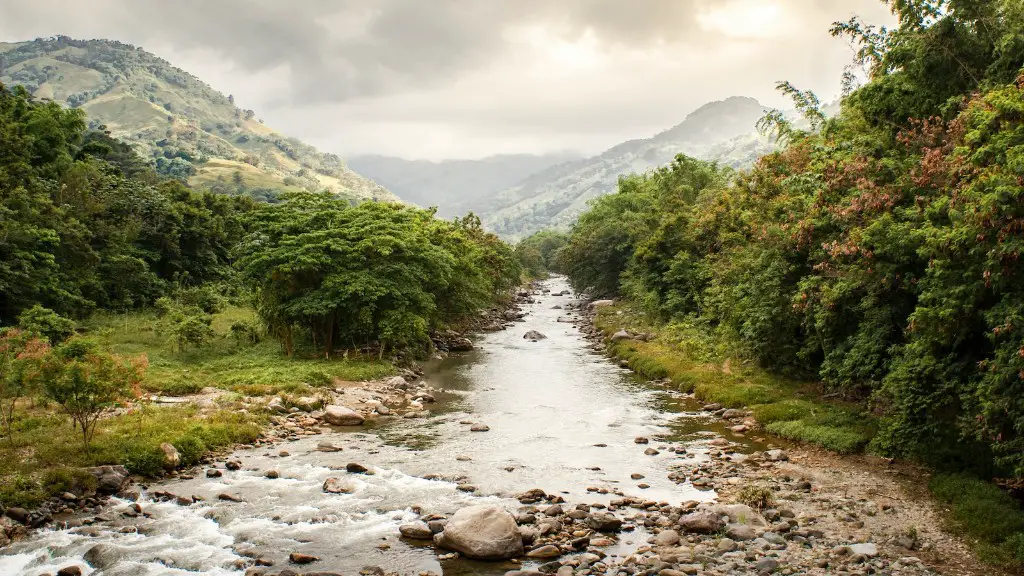River Delta Habitats
The Mississippi River Delta is a stunning example of what ecosystems can be created by the Earth’s natural cycle of sedimentation. It is a vital wetland habitat for a wide array of fish, birds, and other animals, all of which have adapted to the changing environment over time.
The delta region is about 125 miles long and 150 miles wide, and stretches from the base of Louisiana’s Atchafalaya River Basin to the Gulf of Mexico. It’s fed by various tributaries of the Mississippi River, including the Red, White and Atchafalaya River systems.
The many species inhabiting the delta’s diverse habitats include alligators, mink, brown pelicans, bald eagles, and white-tailed deer. The area is also home to a variety of fish, such as the alligator gar, bluegill, carp, and largemouth and smallmouth bass.
Moreover, the Mississippi River Delta is a vital stopping-off point for migrating birds, notably the roseate spoonbill and whooping crane. The delta regions act as a haven for these birds, who use its shallow wetlands and wetlands bays to feed and rest during the migration season.
In addition to the animal creatures, the ecosystem of the delta is home to a wealth of plant life. The often-inundated delta area is a rich source of food, oxygen, protection, and habitats for animals and aquatic plants. These include the aquatic plants such as cattails, sedges, lilies and wetland grasses, as well as various land-based trees, shrubs, and wetland marsh plants.
Recently, the Mississippi River Delta has experienced an ecological awakening due to an array of concerted conservation efforts. These efforts have seen the area become the home to the world’s largest and most successful coastal wetland restoration project, which has successfully restored more than 40,000 acres of the delta area in the past few years.
Climate Change
Despite these conservation efforts, the future of the Mississippi Delta remains in doubt. The primary cause of this uncertainty is climate change. The increasing temperatures and rising sea levels resulting from global warming are causing the delta area to shrink and weaken in certain areas.
The effects of climate change have led to the flooding of more than 1,700 square miles of the delta region, causing unprecedented erosion and disruption of the ecosystem. This has impacted the food web, habitats, water quality, population numbers and reproductive capacity of the plant and animal species living in the region.
These effects are being felt across the different species. For instance, the effects of climate change have been especially damaging for endangered species like the whooping crane, whose population was estimated to be just 5,000 in 2017.
Climate change has also threatened the various other species living in the delta region. For example, the alligators, who rely on floodplains and swamps to thrive. Their presence is essential for the health of the local plant and animal communities, as they help support the life cycle of insects and small fish, as well as help protect the bird population.
Experts have argued that the only way to safeguard the future of the delta region is through concerted international action to reduce emissions and slow climate change. However, this process will take time and require deep commitment from all those involved.
Oil Spills
The second major threat facing the Mississippi Delta is the risk of oil spills. The region has experienced several major oil spills since the 1970s, most notably the BP Deepwater Horizon tragedy in 2010. This massive oil spill released an estimated 4.9 million barrels of oil into the Gulf of Mexico, causing extensive damage to the local wildlife and ecosystems.
The impacts of oil spills can take years to heal. Pollutants from these spills can have a devastating effect on the delta’s delicate aquatic habitats, leading to the death of fish, birds, and other marine life. As a result, the local food web and natural balance of the delta ecosystem is put at risk.
The good news is that the federal government has enacted several regulatory measures to reduce the risk of future spills. These measures include stricter regulations on the oil and gas industry and improved monitoring initiatives. However, it is clear that much more needs to be done to ensure that these important eco-systems remain protected.
Pollution
The final threat to the Mississippi River Delta is pollution. Nutrient-rich runoff from nearby farms and cities, as well as sewage runoff, has contributed to the river’s high levels of pollution. This has caused a range of problems, from the death and displacement of local wildlife to the destruction of aquatic habitats.
To reduce this issue, local and state governments have introduced various initiatives and regulations to limit the amount of pollutants entering the river. In addition, various nonprofit organizations have helped to educate local communities about the importance of reducing runoff, such as planting trees and rain gardens.
Unfortunately, it may be too late to save the Mississippi River Delta from the effects of pollution. The region is currently experiencing a period of rapid erosion, with around 16 square miles of land disappearing in the last five years alone. With more pollution entering the area each day, it is feared that more of the delta’s fragile habitat may be lost forever.
Conclusion
The Mississippi River Delta is an important ecosystem, providing vital habitats and resources for a wide range of plant and animal species. Unfortunately, this crucial wetland habitat is under threat from a combination of climate change, oil spills, and pollution.
If we are to protect the delta’s unique wildlife and ecosystems, it is essential that governments, businesses, and citizens work together to reduce the impact of these threats. It is only through collective action that we can safeguard this precious wetland habitat and ensure its future.




